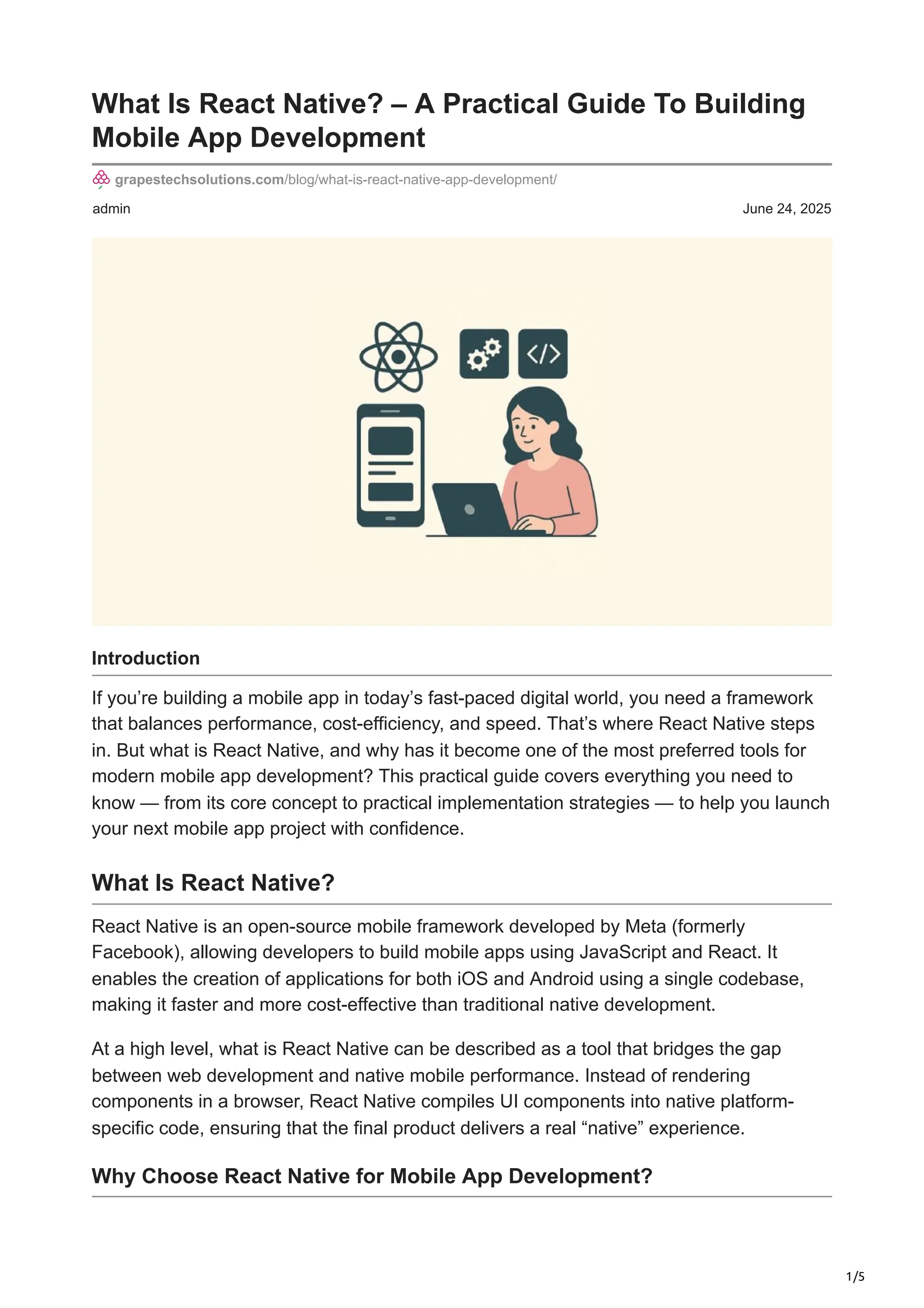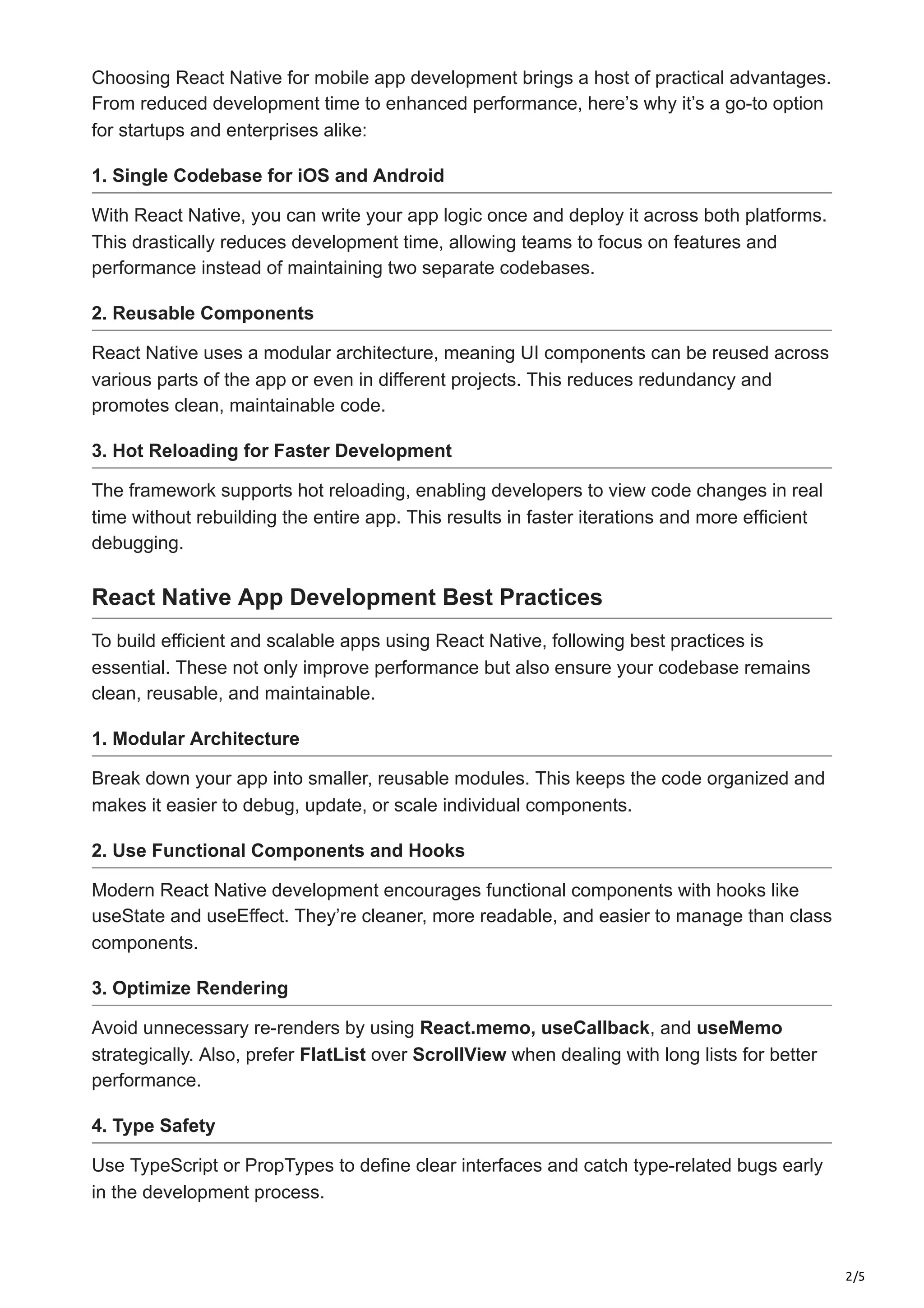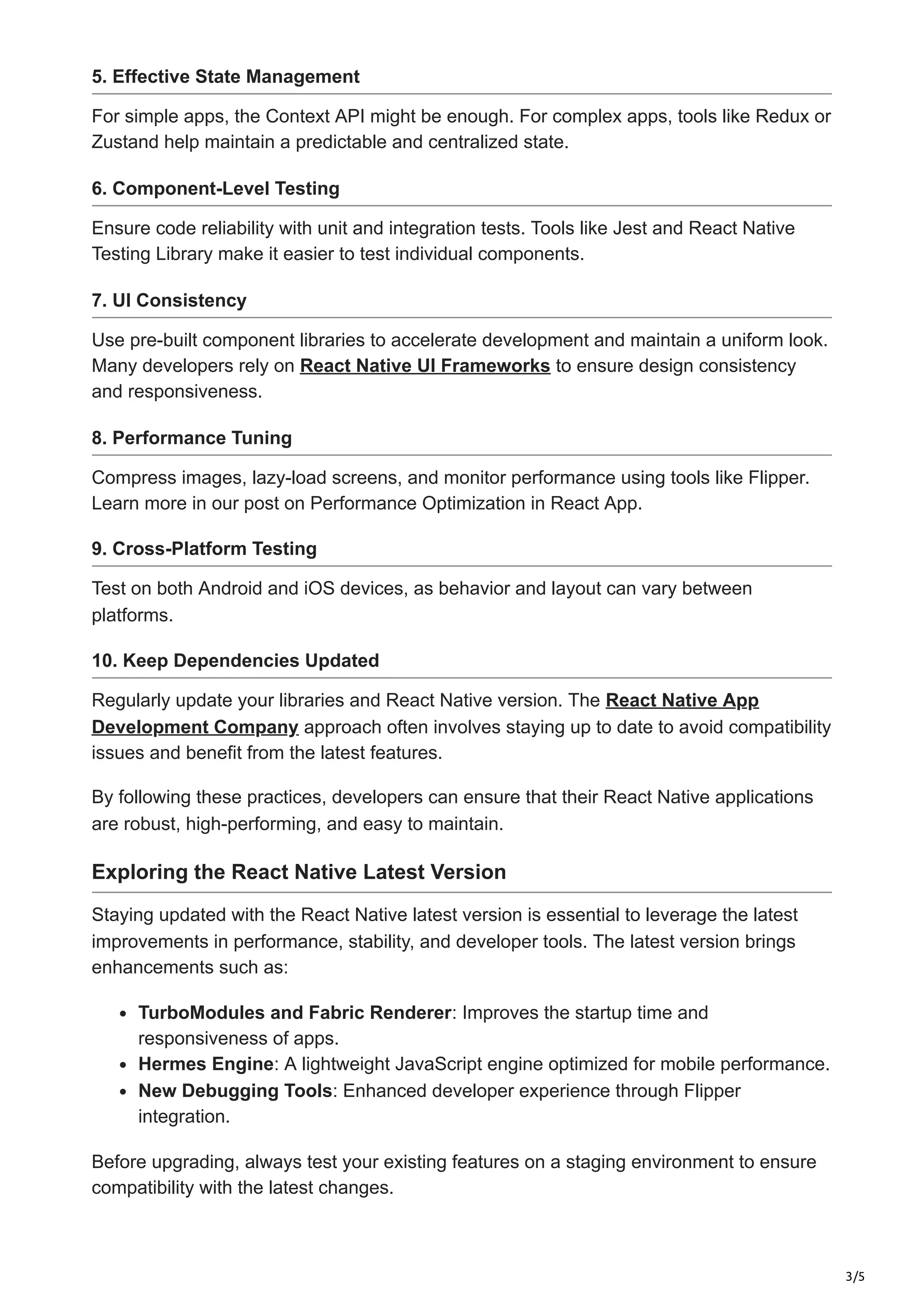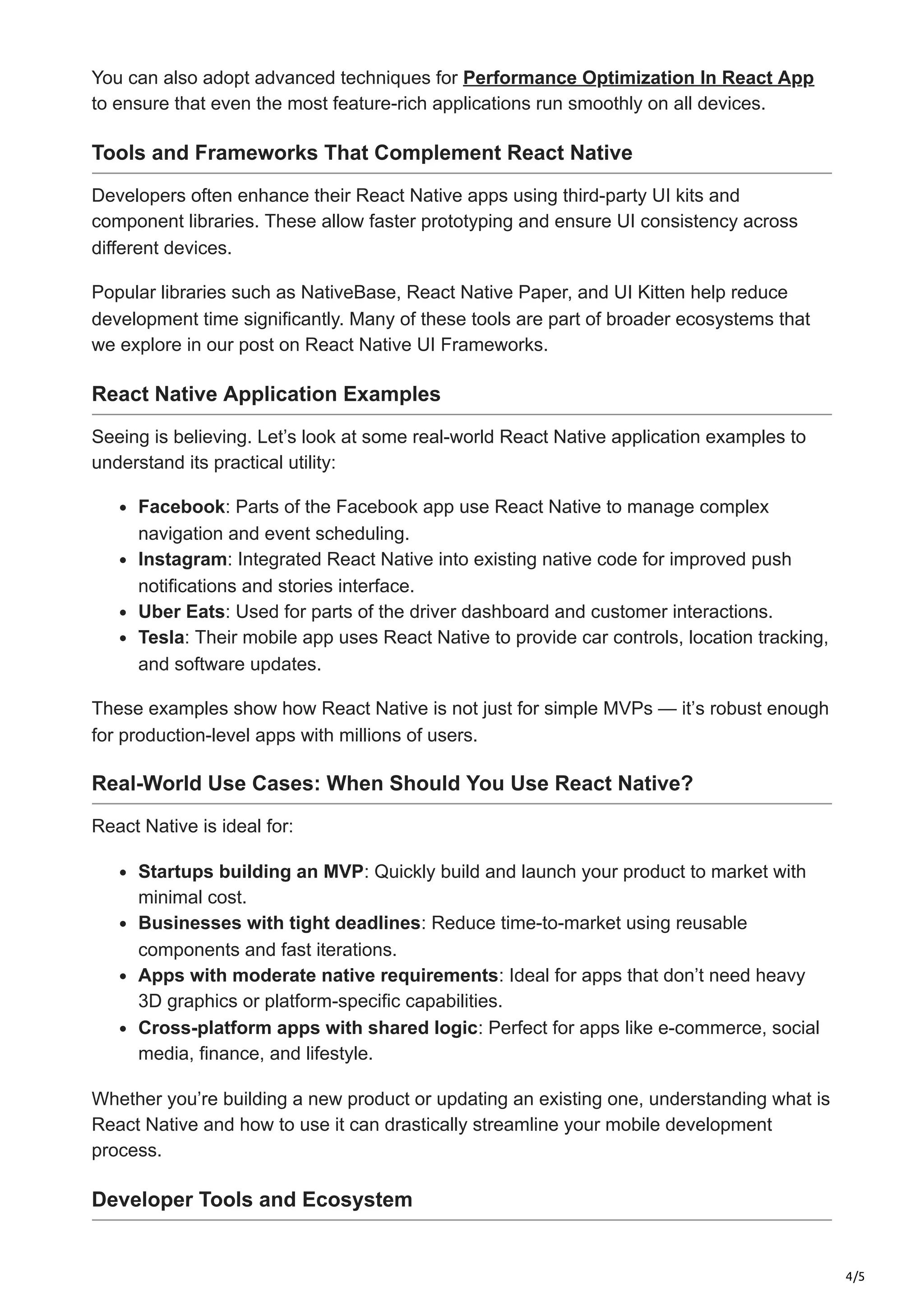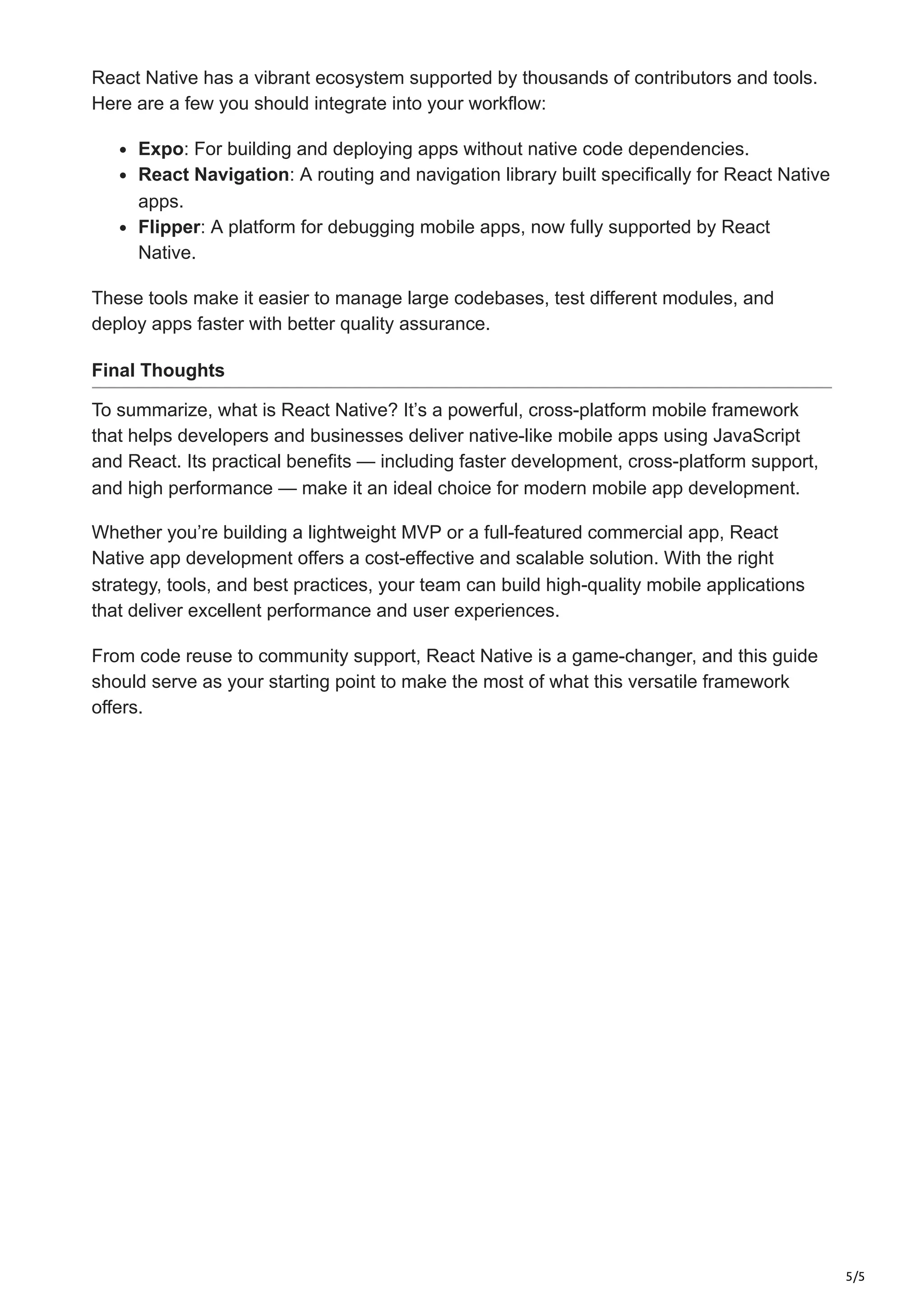If you’re building a mobile app in today’s fast-paced digital world, you need a framework that balances performance, cost-efficiency, and speed. That’s where React Native steps in. But what is React Native, and why has it become one of the most preferred tools for modern mobile app development? This practical guide covers everything you need to know — from its core concept to practical implementation strategies — to help you launch your next mobile app project with confidence. Read In Detail Blog: https://www.grapestechsolutions.com/blog/what-is-react-native-app-development/
